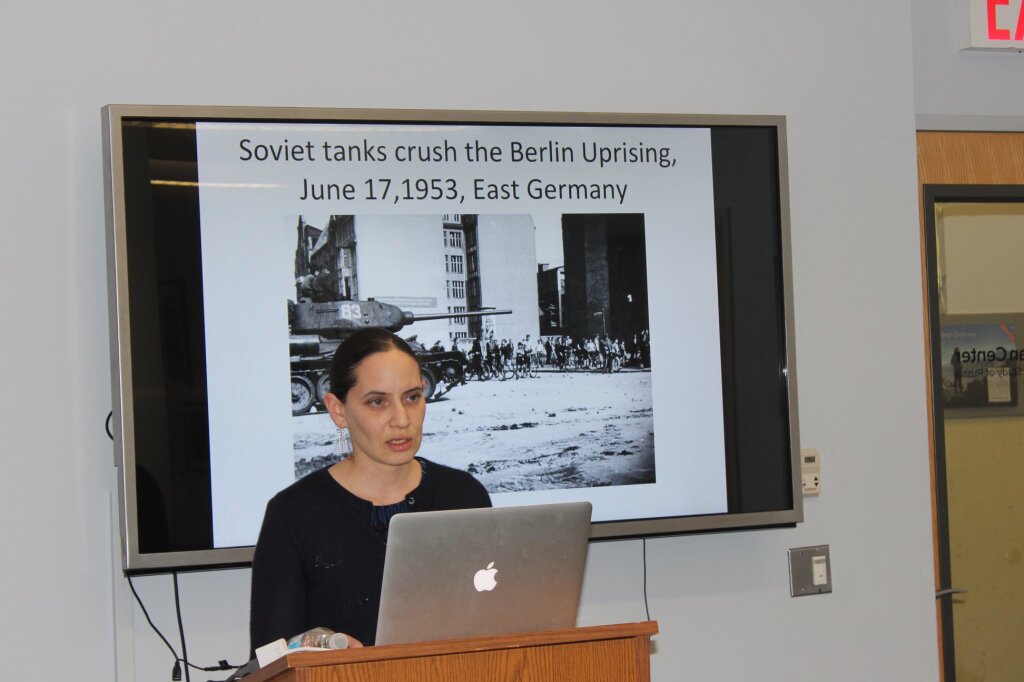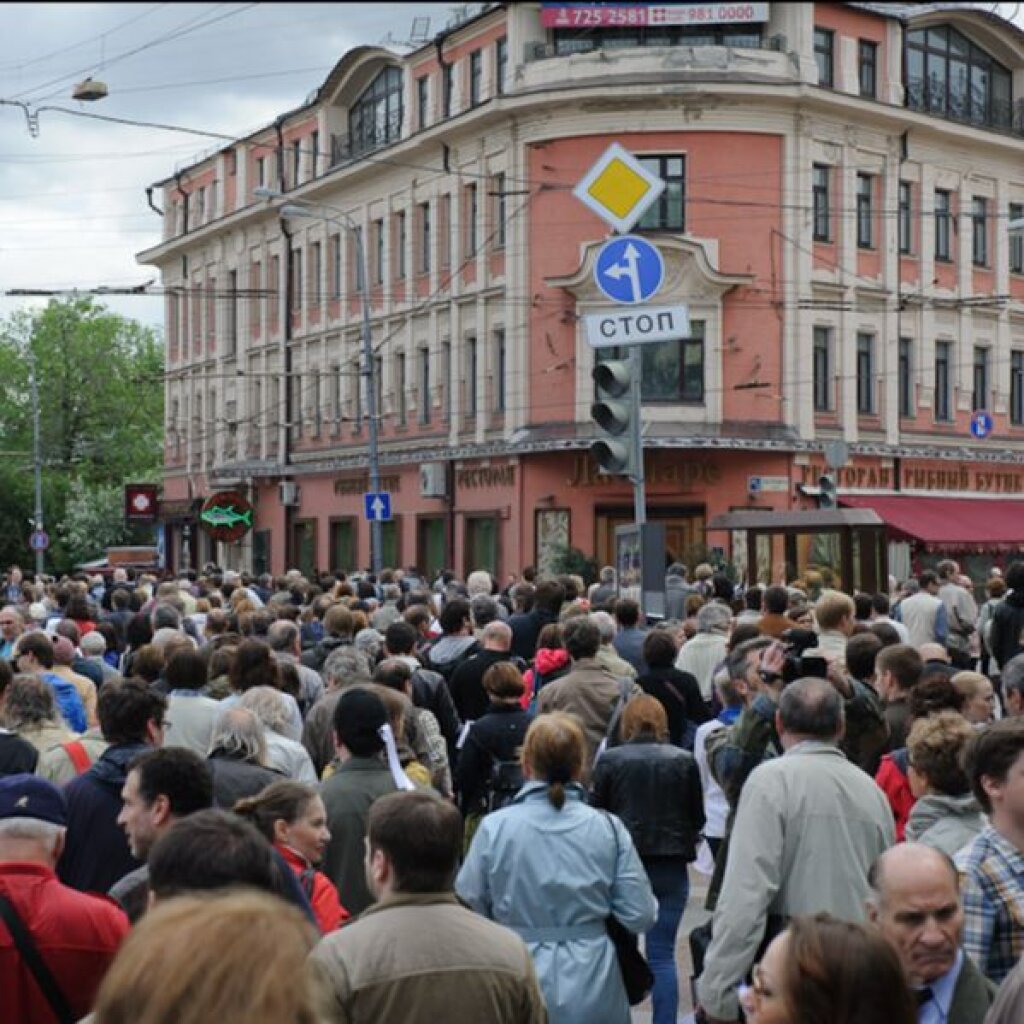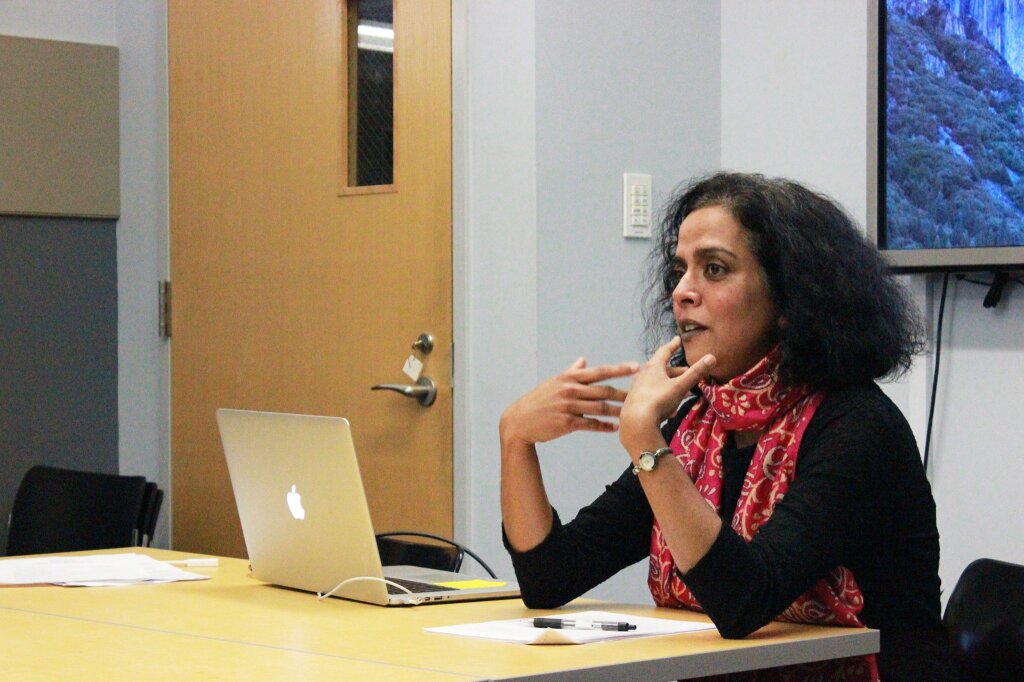On Friday March 23rd, the NYU Jordan Center hosted “The Legacy of Liberation: Soviet Power and Socialist Friendship in Cold War Czechoslovakia”, a talk with Rachel Applebaum, Assistant Professor of Russian and East European History at Tufts University. Anne O’Donnell, Assistant Professor of History at NYU, introduced the lecture.
Beyond the imperial control and mass repression instituted by the Soviet Union on its satellite states through the course of the 20th century, the regime simultaneously worked toward another kind of empire creation, one built on the notion of “transnational friendship” aiming to create a cohesive socialist world. This friendship project was felt most strongly in the development of relations between the Soviet Union and Czechoslovakia.
The Soviet liberation of Czechoslovakia in 1944-45 was the first step towards building this friendship. Soviet soldiers’ treatment of Czech citizens was much more humane than that in other regions of the Soviet bloc. The Red Army was received by the local Czechoslovak population with surprisingly open arms, highlighting a widespread support for Communism. Some witnesses even described the scene as a “love affair” between the Soviets and Czechoslovaks. In Germany, Hungary and Poland, on the other hand, Soviet soldiers were met with apprehension and fear, and France and Britain felt similarly betrayed by the Soviets as a result of the Munich Agreement.
Such dynamics initiated the construction of a kind of “myth” of the developing Soviet-Czechoslovak friendship, which ultimately served to reinforce Soviet hegemony. While such a myth highly idealized the blossoming friendship, in practice, this was a largely one-sided love affair, illustrated by “Soviet domination and Czechoslovak supplication.” After the liberation, Czechoslovak people actively participated in mass demonstrations and erected monuments showing their support for the Soviets. Soviet commemoration of World War II took a different, and more delayed, form. The immediate post-war period was one of silence in regard to the war, as the magnitude of loss and destruction did not lend itself easily to triumphant narratives. It was only upon Stalin’s rise to power that the “cult of war” was enacted, and Victory Day was instituted as a holiday only after 1964. Thus, the narrative of victory was initially projected on such countries as Czechoslovakia.
The friendship narrative was significantly re-shaped during the period of Destalinization. In the 1950s and 60s, relations between the Soviet Union and its satellite states became increasingly more reciprocal. Moreover, after Stalin’s death, commemorations began to integrate the participation of more ordinary people, rather than exclusively focusing on official state commemorations. In 1955, mass tourism between Czechoslovakia and the Soviet Union went into effect, signaling the start of a post-war friendship. This theme of transnational encounters became a theme for depictions of the friendship in the media starting in the mid-1950s. The film May Stars, for example, is structured through four vignettes illustrating the liberation period through friendly encounters between Czechoslovaks and Soviets.
The post-Stalinist period thus witnessed the development of a new myth of liberation. Instead of a relationship featuring Soviet domination, this new narrative reversed the notion of gratitude, emphasizing Soviets’ expression of thanks to the Czechoslovak people for salvation. This alternative narrative revealed the intricate complexities underlying Soviet-Czechoslovak relations. The post-Stalinist friendship narratives did, however, conceal two important truths. First, the line between violence and friendship was a thin one; in spite of all the stories of liberation and friendly encounters, incidents of rape and murder of Czechoslovaks by Soviet soldiers were frequent. Second, these alternative narratives could ultimately never recreate the level of friendship consolidated between Czechoslovakia and the Soviet Union during Stalin’s rule.
The Prague Spring represented a third major shift in the two sides’ relations. The 1968 Soviet tank invasion crushed the Czechoslovak reform experiment and was received antagonistically by the local population. Consequently, the Soviet press depicted Czechoslovaks as counterrevolutionaries, suggesting that they were “betraying the liberation’s legacy.” The Soviet invasion provided a stark contrast to the liberation of 1945 and so the Czechoslovaks drew on the 1945 events, highlighting the “liberation” in juxtaposition to the “occupation” of 1968. The occupation in fact also served to reinforce the “mythology of the benevolence of the liberation” of 1945. The friendship myth thus continued to live on in the memories of the Czechoslovak people, but the intimacy of liberation was never recovered.
The fall of Communism triggered a re-exploration of Soviet and Czechoslovak relations. In 1991, Czech artist David Černý painted a Soviet tank pink, triggering anger from the deposed Soviet government. This satirical response to the Soviets’ 1945 liberation of the country, along with the active debates initiated in the post-Soviet period, begs close attention to the complexities of Soviet-Czechoslovak dynamics of the second half of the 20th century.
The talk was followed by a Q and A. One audience member asked about the role of trade within this friendship project, particularly in light of the fact that both sides had different rates of technological advancement. Applebaum responded, using the Soviets’ construction of the Prague metro as an example. The plans for the metro actually predated liberation, and the metro was ultimately given as a “gift of gratitude” for the Czechoslovak people. Nevertheless, at this stage of their friendship, intimacy was weak and there existed significant tension between the two sides. The trade of goods did, however, possess another more ideological component. On some level, the Soviet Union strived to promote Czech goods to reinforce the collective industrial effort and project an image of cooperation throughout the Soviet bloc, in line with Communist ideology. Another participant asked about the central institutions that shaped this project. Applebaum noted that there existed core friendship societies in both countries; in Czechoslovakia, there were two predating World War II, both run by the Communist Party. In the Soviet Union, the first one was founded in 1958.



